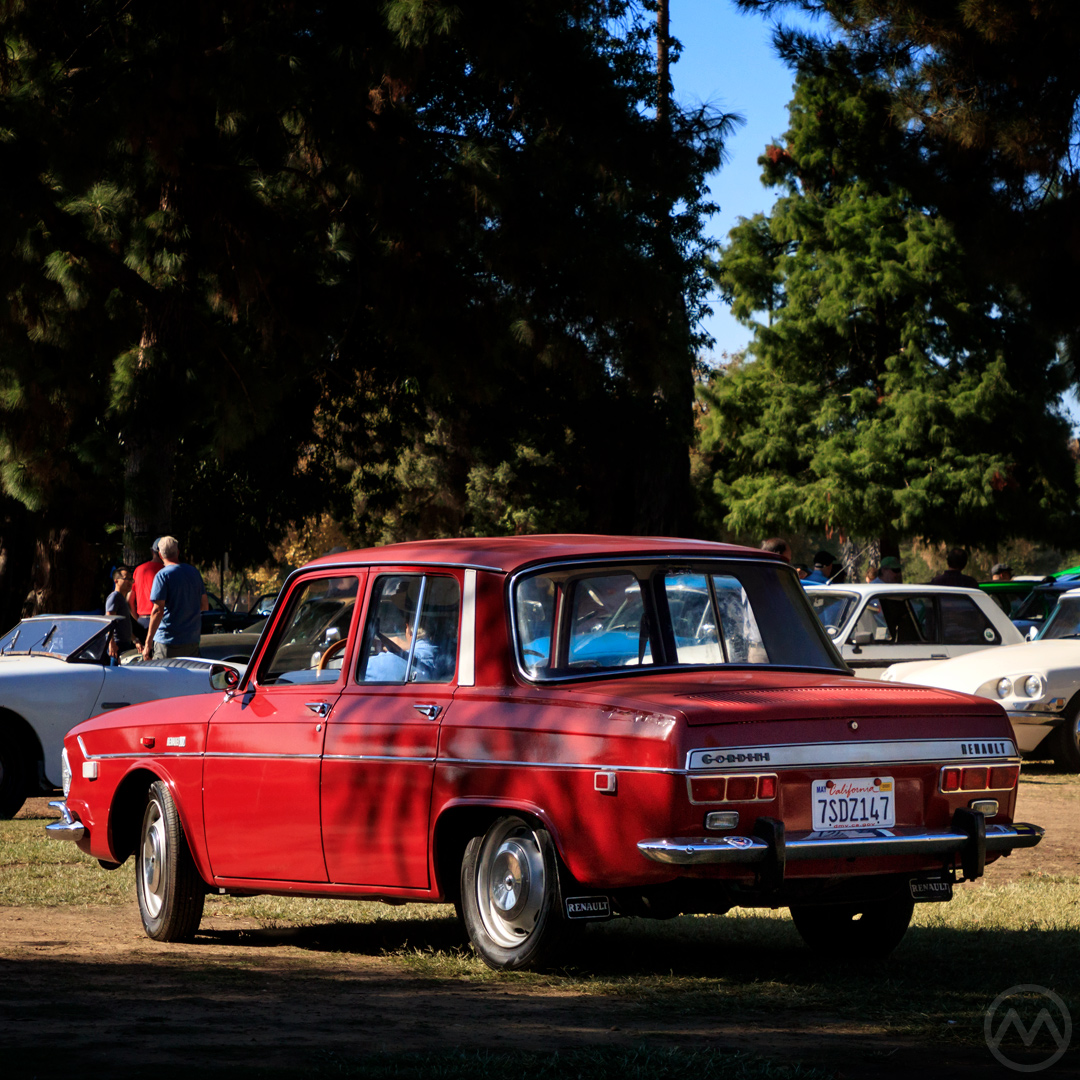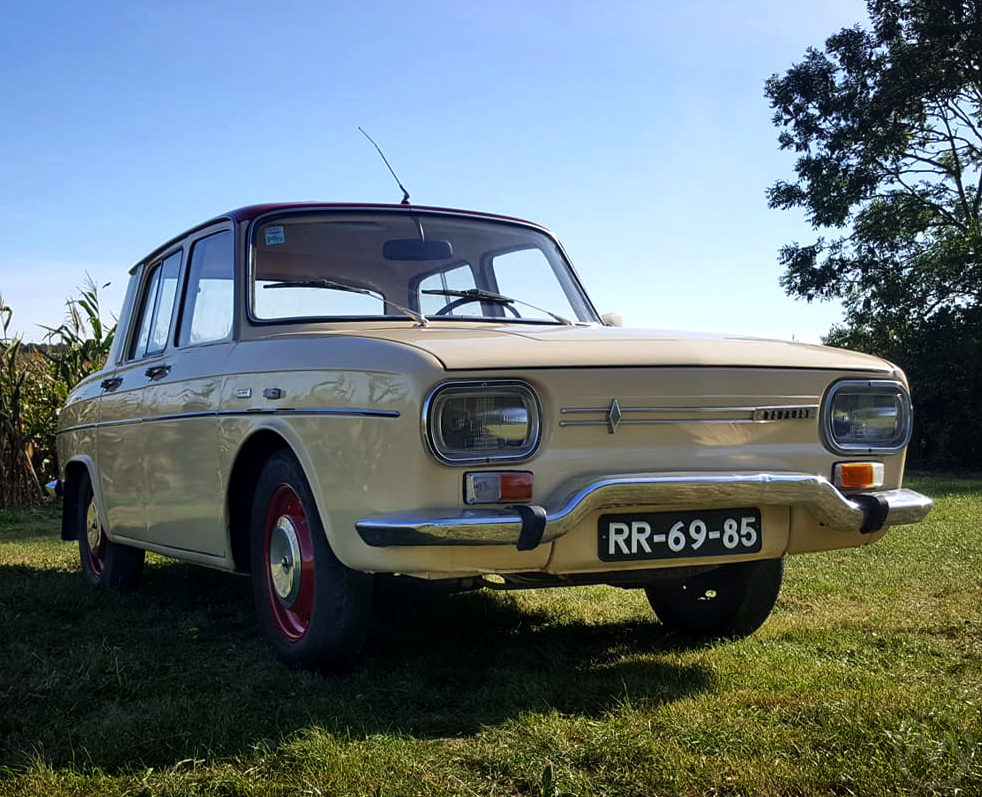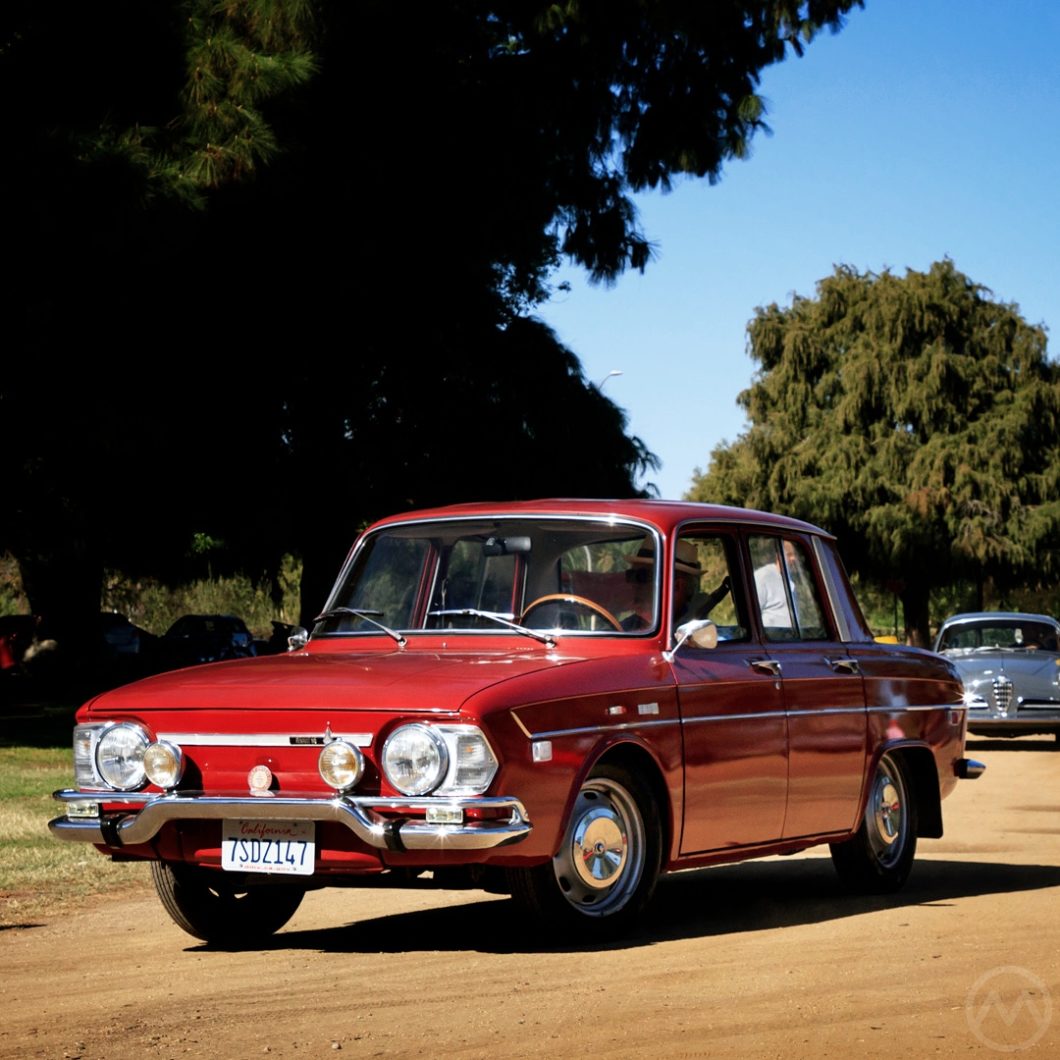Just 12,100 Renaults were sold in the U.S. in 1966, down from a dizzying high of 91,000 in 1959. The blame for this lay squarely on the Dauphine and Renault’s haphazard approach to building a robust support network (read: dealers) in the 1950s. Billancourt had recruited lots of dealers but didn’t necessarily vet them very well.
Once word got out that Dauphines were fragile, rust-prone, and subject to indifferent service and periodic parts shortages, Renault’s reputation was permanently sullied. So much so that when the Renault 10 arrived for 1967 it was advertised as “A Renault for people who swore they’d never buy another.”
Despite this inauspicious beginning, the 10 wasn’t a bad car and actually did manage to win a few people back.
The 10 might have looked a little familiar because it was plainly an evolution of the existing circa-1962 R8, itself an evolutionary step onward from the Dauphine. Today the R8 is a car associated with rally wins and Gordini (always in its trademark blue), but back then it was just a regular European family car, and Renault wanted to expand its European lineup upward. It was already working on what became the R16, but there was still a little more life left in the rear-engine cars.
Creating the Renault 10
Renault’s designers, led by Pierre Mignon but also including Vincent Dumolard and a young staffer named Michel Boué, who would go on to design the R5, spruced up the R8 (later just Renault 8) into the 10 Major in 1963-64 for the purposes of that expansion.
The result was about eight inches (20cm) longer overall, with more room inside and more room in the (forward) trunk. A little bit of the structure was revised too, with Renault advertising the 10’s “crumple zones,” though you probably wouldn’t want to test them.
In Europe, the 10 sold alongside the 8, with the top-spec versions of the 8 (R8 Major) being dropped in favor of the newer, larger car when it debuted in the fall of 1965. However, in the USA the 10 ended up being Renault’s volume seller and only U.S. model for much of 1967-68. The R16 belatedly joined it stateside late in 1968, but in the 10’s run as Renault’s only American offering, sales rose.
A descendant of the Dauphine/4CV, the Renault 10 was to be the last rear-engined Renault sedan, but felt quite different from those old stagers. For one thing, it was much bigger inside, and thanks to the long flat hood it felt more substantial behind the wheel.
Those who did try it were rewarded with a good car at a friendly price, 30% less than a base Plymouth Valiant, but its real competition was other imports. It looked and felt as substantial as Volkswagen Type 3, but was priced directly against the Beetle, sometimes within $10 of the Beetle’s list price. The 10 was distinctly middle class, by comparison, offering four-wheel disc brakes, sharper handling, four doors, and lots of room for what was a tiny car by American standards.

Early European Renault 10s had round headlights, which meant virtually no cosmetic changes were needed for U.S. sale, but the later European 10s got rectangular flush lights, which were better but not U.S.-legal (thanks in part to “not invented here” syndrome).
The 10 also featured the 48-hp, 1108-cc “Sierra” engine from the R8 Major/Caravelle, much better for highways than the Dauphine. Although that was a paltry amount of power compared to cheap V8 American cars at the time, it only weighed about 1,700 lbs., which meant fairly acceptable performance compared with regular VWs, Fiats, or those new Toyota Corollas.
The 10’s Later Years
The car helped turn the tide for a little while. Renault sold more than 21,000 cars in the U.S. in 1967 and again in 1968, nearly all of them Renault 10 sedans. It was durable and easy-to-live compared to the Dauphine, though it still suffered from poor parts support in later years.
In 1970 the 10 got the new 1289-cc, 56-hp four from the R12, and in 1971 a run-out model called the 10 Sierra, with stripes and a special interior with Polynesian-inspired seat patterns (seemingly targeted at the five people who bought Panhard Tigres a decade earlier, they are very rare today).
In time, the old R8 actually outlasted the 10 in production, with the 10 having been replaced by the front-engine, front-drive R12 in 1970-71.
After the 10 faded away in the USA in 1971, Renault sales slumped again and the 12, which was heavily advertised, never seemed to recapture that momentum.
Renault’s American fortunes were not revived until Boué’s all-conquering R5 was adapted for the USA in 1976. Debuting as the R5, it was soon renamed Le Car by Renault’s marketing team in New Jersey, and became the only French-built Renault to really rival the Dauphine in U.S. sales, but that’s a story for another day.


